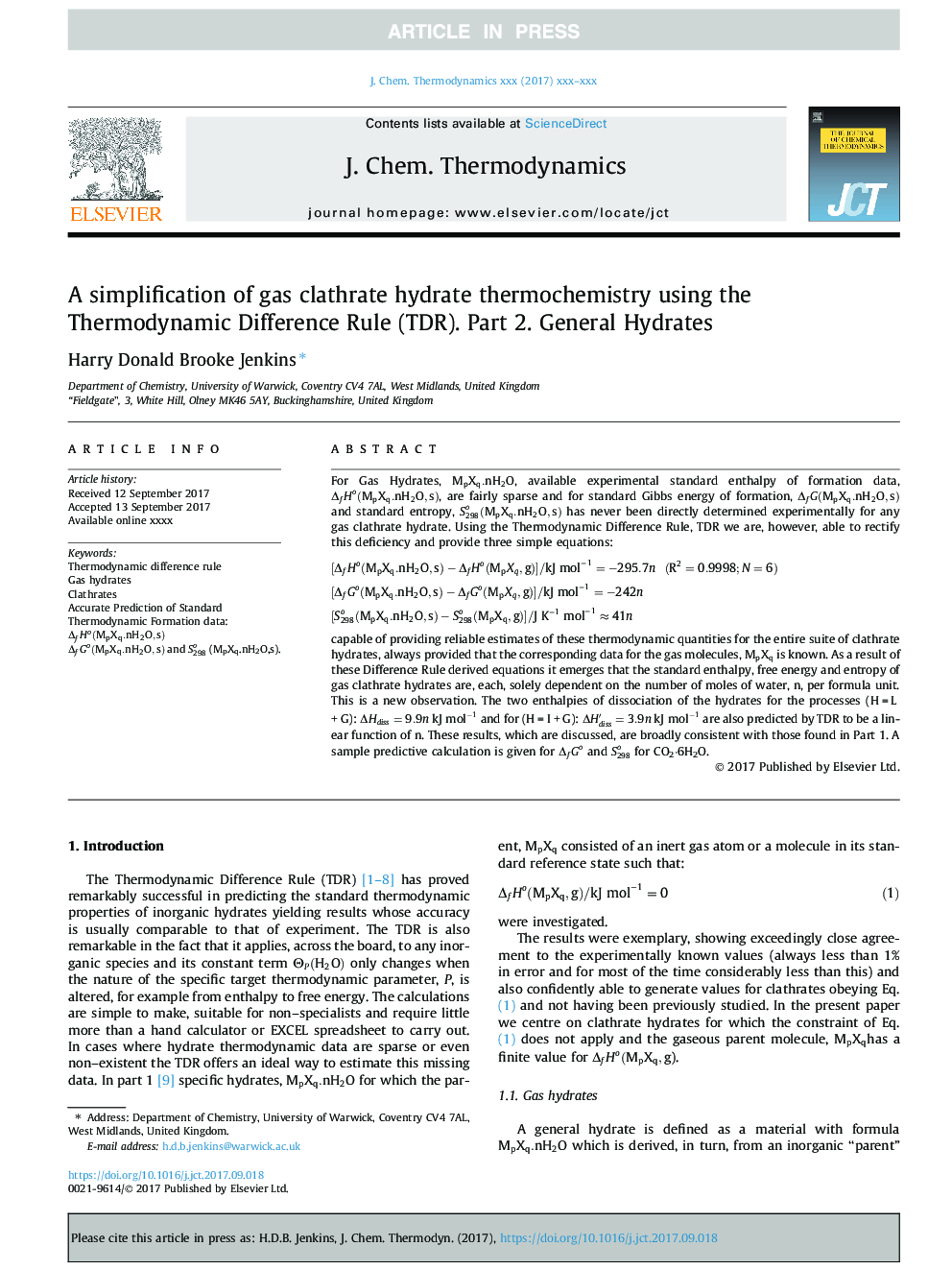| Article ID | Journal | Published Year | Pages | File Type |
|---|---|---|---|---|
| 6659925 | The Journal of Chemical Thermodynamics | 2018 | 6 Pages |
Abstract
For Gas Hydrates, MpXq.nH2O, available experimental standard enthalpy of formation data, ÎfHo(MpXq.nH2O,s), are fairly sparse and for standard Gibbs energy of formation, ÎfG(MpXq.nH2O,s) and standard entropy, S298o(MpXq.nH2O,s) has never been directly determined experimentally for any gas clathrate hydrate. Using the Thermodynamic Difference Rule, TDR we are, however, able to rectify this deficiency and provide three simple equations:[ÎfHo(MpXq.nH2O,s)-ÎfHo(MpXq,g)]/kJ mol-1=-295.7n(R2=0.9998;N=6)[ÎfGo(MpXq.nH2O,s)-ÎfGo(MpXq,g)]/kJ mol-1=-242n[S298o(MpXq.nH2O,s)-S298o(MpXq,g)]/J K-1mol-1â41ncapable of providing reliable estimates of these thermodynamic quantities for the entire suite of clathrate hydrates, always provided that the corresponding data for the gas molecules, MpXq is known. As a result of these Difference Rule derived equations it emerges that the standard enthalpy, free energy and entropy of gas clathrate hydrates are, each, solely dependent on the number of moles of water, n, per formula unit. This is a new observation. The two enthalpies of dissociation of the hydrates for the processes (H = L + G): ÎHdiss=9.9nkJ mol-1 and for (H = I + G): ÎHdissâ²=3.9nkJ mol-1 are also predicted by TDR to be a linear function of n. These results, which are discussed, are broadly consistent with those found in Part 1. A sample predictive calculation is given for ÎfGo and S298o for CO2·6H2O.
Keywords
Related Topics
Physical Sciences and Engineering
Chemical Engineering
Chemical Engineering (General)
Authors
Harry Donald Brooke Jenkins,
